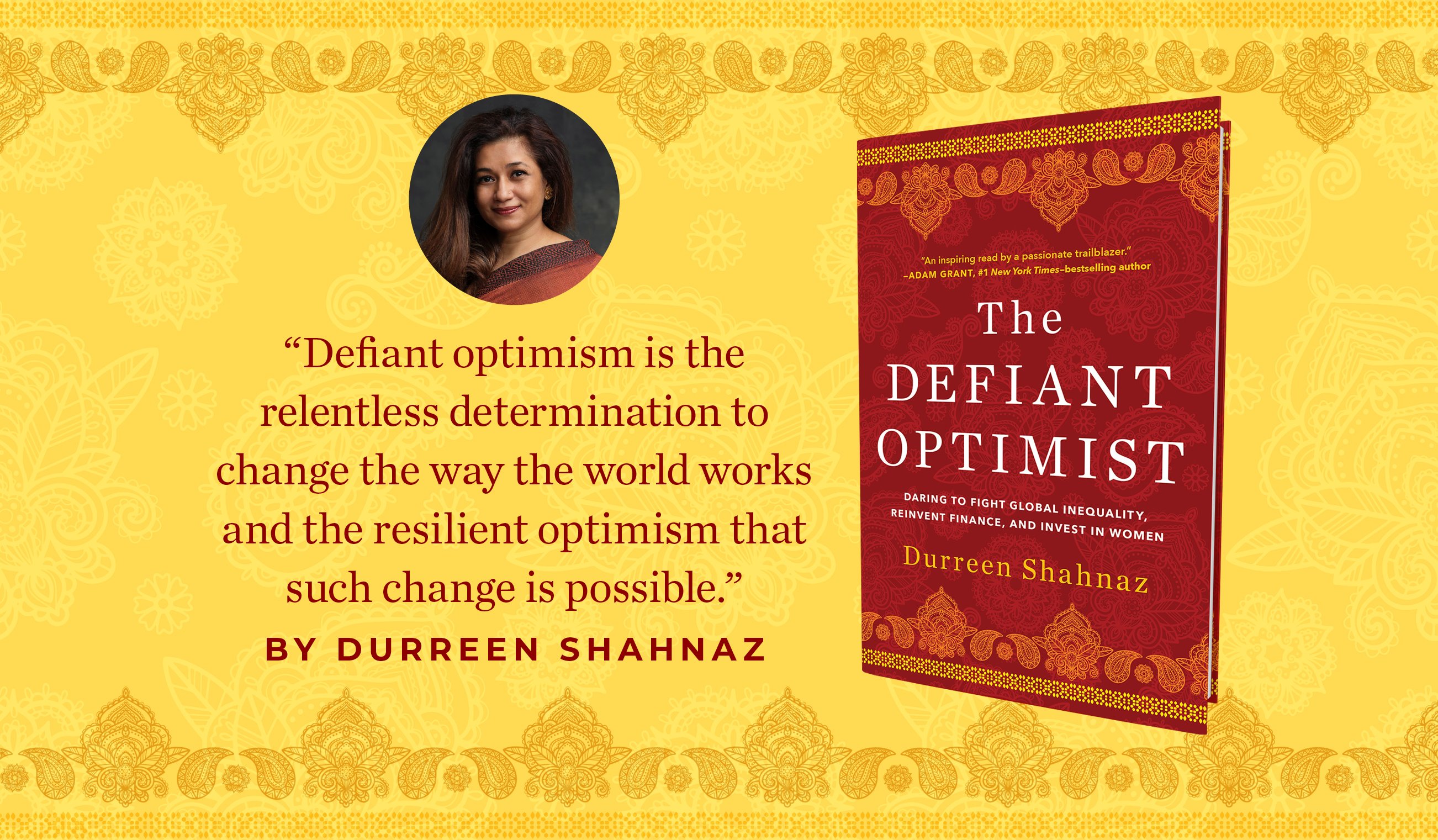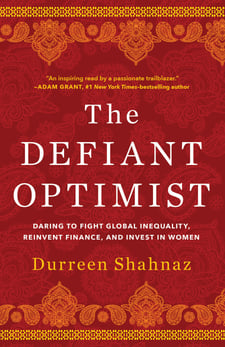In the evenings when I was young, my grandmother stitched blankets out of old saris. These cotton saris, worn by the women in my family as they worked, had become worn and thin. But stitched together with intricate nakshi (designs), the saris were reborn as kantha: blankets, which would keep us warm at night.
With the fabric spread across the bed, my grandmother would stoop over and patiently stitch beautiful patterns—sun, moon, stars, flowers, and leaves—with multicolor threads. Using traditional Bengali quilting stitches that women in the villages used to sew layers of saris together, she bent close to the fabric, embroidering elaborate and beautiful motifs. When her sister and nieces visited, they, too, along with my mother and grandmother, would sit on the bed, legs crossed, and join in stitching. They talked while they worked, catching up on each other’s lives. I watched, marveling both at the intricacy of their designs and the bond between them.
Years later, working in microfinance in Bangladesh, I watched rural women stitch nakshi kantha just like my grandmother and aunts did. I often walked into a courtyard surrounded by mud huts and banana trees to find a group of women stitching kanthas as chickens ran around their ankles. Chewing betel nut and tobacco leaves, the women shared stories of sorrow and hope as they worked.
Each kantha, an elaborate art of blessings and empowerment, would be given to another woman in the community. The more elaborate kanthas were often gifts for brides-to-be. Whenever I asked about the story behind a particular nakshi, the women would blush and giggle. Then the needleworker who had designed the blanket would pull the end of the sari that covered her head a little tighter, perhaps to give herself the confidence to speak up.
The nakshi represented her own unfulfilled hopes, she said quietly, so that the new bride could fulfill them. The design of a boat represented the travels the needleworker had longed to take but for which she never had the opportunity. Two birds kissing symbolized the true and tender love of a husband that she longed for. An open book represented the education that she wanted but could not obtain, and the rice field stood for the abundant crop that was beyond her reach because she did not own any land.
Spread before us, the faded colors of the saris came alive with the unfulfilled dreams and aspirations of the needleworkers. I would sit on the ground with these women, on mats woven from dry palm leaves, and look around the circle in wonder. They wanted to feed themselves and their families, to educate their children, and to make beautiful things that last.
Their kanthas contained messages. These blankets, and the designs they carried, passed on the longing that a young woman would find opportunities and blessings the needleworker herself had never had. Written on beloved and worn saris, those designs became dispatches of defiant hope.
Economic inequality. Environmental collapse. Gender injustice. Pandemic. War. The fundamental ills of this world remain the same over centuries. These things haunted our grandparents and great-grandparents, and they remain top of mind for us today.
More than 2 billion people are living on under $1.25 a day, and they live by oceans that are swelling and forests that are burning. The COVID-19 pandemic has exacerbated the wealth gap and the gender gap, with women across the world bearing the brunt of economic and social upheaval.
Meanwhile, wealth and power are burgeoning—concentrated among a small group of people. The top 1 percent of households globally own 43 percent of all personal wealth, while the bottom 50 percent own only 1 percent. The world today has more than three thousand billionaires. Our global financial system is worth over $160 trillion—and it is managed, maneuvered, and manipulated by 1 percent of the population. In 2019, the world’s billionaires held more wealth than 4.6 billion people.
In this system, women, minorities, and residents of the Global South are categorically excluded from the table, especially within financial markets. Globally, women still earn only 77 cents on each dollar that men earn. Close to 2 billion women from the Global South barely appear either as major investors or investees in the all-powerful global financial markets. A just world will remain a fantasy until they do.
The Defiant Optimist tells the story of my journey to ensure that financial markets hear the voices of women and represent the concerns of people of color and underserved communities. It’s a story of challenging Wall Street to change its definition of risk and redefine value to uplift work that creates good in this world.
This journey to shape finance for good has been a long one. First, I had to understand the system; then, over decades, I had to find ways to repurpose it and make it inclusive of social justice. Along the way I discovered the power of what I have come to call defiant optimism: the stubbornly hopeful refusal to accept what others might call “fate” or “just the way things are.”
Defiant optimism is what I saw among the women stitching nakshi kantha in Bangladesh: the audacity to believe that women deserve education and the chance to determine their own futures. It is the relentless determination to change the way the world works and the resilient optimism that such change is possible. It’s the stubborn belief that systems that benefit the few can be transformed for the good of the many.
It’s the attitude I’ve seen modeled by women I’ve met with around the globe, in places like Cambodia, Egypt, India, Indonesia, Jordan, the Philippines, and Guatemala—women who refuse to accept that what they’ve been told is their fate is the same as their future. Women who stitch their own unrealized dreams into empowerment for others, and who defy common wisdom enough to imagine a different world into being.
You can be a defiant optimist, no matter what work you do. Public sector, private sector, or anything in between: what if people across all industries committed to expanding structures of power and access to those who have been denied? What if we all together became defiant optimists? Could we dare to imagine a world where we break down walls and fight to heal the planet’s ills?
Voices are shouting from the tin rooftops of the Global South, fighting against all those who work to hold us down and shove solutions down our throats. The Defiant Optimist is the story of a defiant girl rising up, seeking the sources of power, and finding the optimism to fuel change. It’s the story of defiant optimists across the globe who are stitching threads of defiance and hope and dreams of a better future. It can be your story too.
This is an excerpt from The Defiant Optimist preface.




